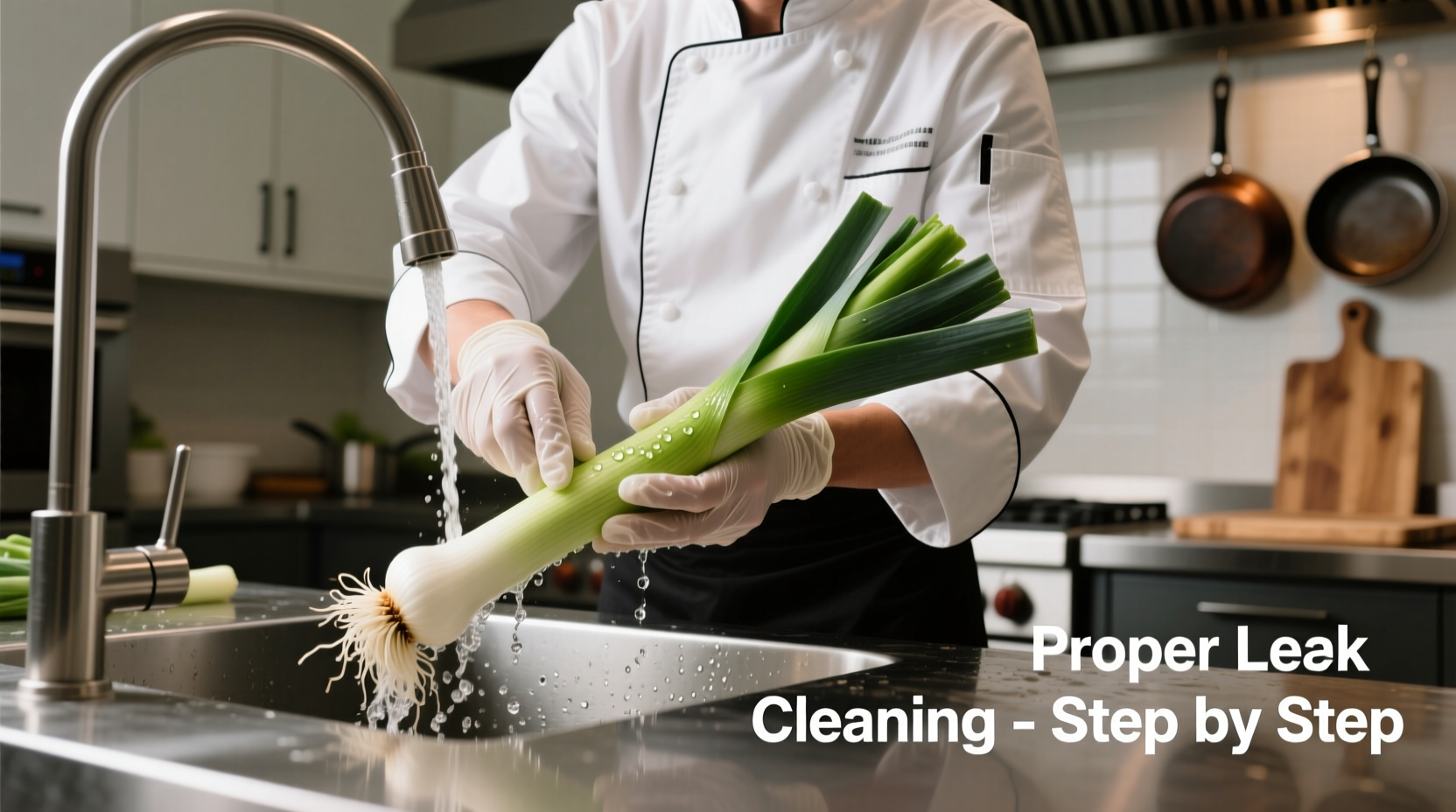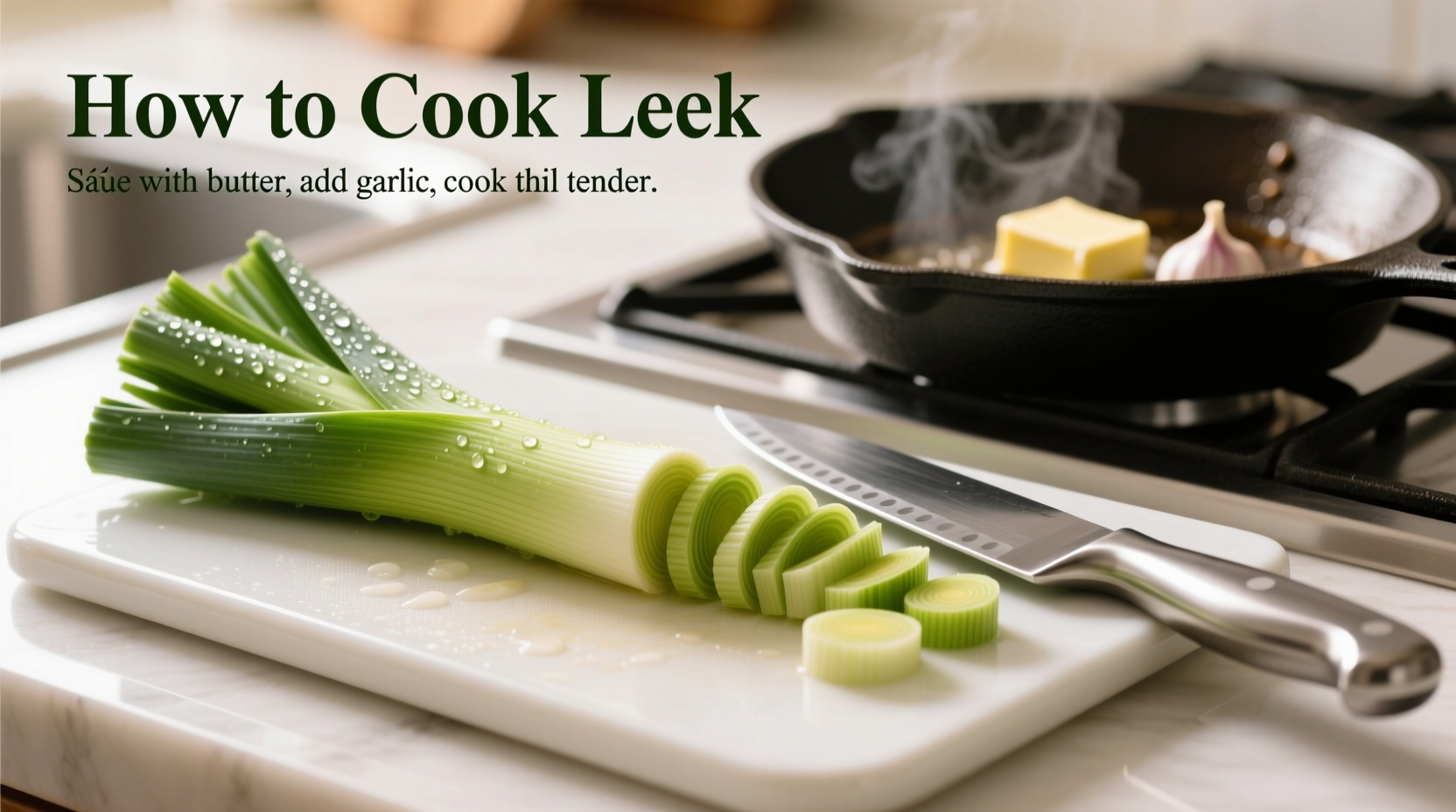Master Perfect Leek Preparation in 4 Simple Steps
Discover how to transform these elegant alliums from gritty to glorious with professional techniques that guarantee restaurant-quality results every time. Whether you're a beginner or experienced cook, these methods solve the #1 problem home chefs face: properly cleaning leeks without wasting precious edible portions.
Why Proper Leek Preparation Matters
Leeks contain significant amounts of trapped soil between their layered structure. Improper cleaning leads to gritty, unpleasant dishes—a common frustration that deters many from using this versatile vegetable. According to USDA agricultural specialists, the white and light green portions contain the most concentrated flavor compounds that develop beautifully when cooked correctly.
Your Complete Leek Cooking Roadmap
Step 1: Selecting & Understanding Leek Varieties
Not all leeks are created equal. Understanding seasonal availability and variety differences prevents cooking disasters before they begin:
| Leek Variety | Best Season | Cooking Characteristics | Recommended Use |
|---|---|---|---|
| Summer leeks | April-July | Thinner, milder flavor | Raw in salads, quick sautéing |
| Winter leeks | August-March | Thicker, sweeter after frost | Roasting, soups, gratins |
| Elephant leeks | Year-round | Milder, larger diameter | Grilling, stuffing |
Choose firm, straight stalks with crisp dark green tops. Avoid wilted or yellowing specimens which indicate age and diminished flavor. The USDA Agricultural Research Service confirms that proper selection directly impacts both texture and nutritional value.
Step 2: The Foolproof Cleaning Method (No Waste Guaranteed)
Traditional halving methods waste up to 30% of edible portions. Professional chefs use this efficient technique:
- Trim root end and dark green tops (reserve for stock)
- Make a deep vertical slit through the white base up to 2 inches below green section
- Submerge in large bowl of cold water, spreading layers gently
- Swirl vigorously for 30 seconds to release trapped dirt
- Lift leeks out (dirt remains in bowl), repeat if necessary
- Pat dry thoroughly before slicing
This water displacement method preserves maximum edible portions while ensuring complete cleanliness. Food safety experts at FDA's Food Safety Education emphasize thorough vegetable cleaning to prevent foodborne illness.

Step 3: Precision Slicing for Perfect Results
Cut direction dramatically affects cooking time and texture:
- Half-moons (perpendicular to length): Ideal for soups and sautés, cooks in 7-10 minutes
- Diagonals (45-degree angle): Increases surface area for caramelization, needs 5-8 minutes
- Julienne (thin matchsticks): Perfect for stir-fries, requires just 3-5 minutes
Maintain consistent thickness—uneven pieces cook at different rates. For creamy dishes, slice thinner (1/8 inch); for roasted applications, cut thicker (1/4 inch) to prevent disintegration.
Step 4: Cooking Methods Demystified
Temperature control separates acceptable from exceptional leek dishes:
Sautéing (Most Versatile Method)
Heat 1 tbsp oil or butter in skillet over medium heat (325°F). Add leeks with pinch of salt. Cook 8-10 minutes, stirring occasionally, until tender but still slightly firm. The critical mistake? Turning heat too high—this causes burning before interior cooks through.
Roasting (Deepens Natural Sweetness)
Toss cleaned leeks with 1 tbsp olive oil, salt, and pepper. Spread on baking sheet. Roast at 400°F for 15-20 minutes until edges caramelize. Flip halfway through for even cooking. Winter leeks develop remarkable sweetness through this method.
Grilling (Surprising Flavor Dimension)
Brush whole cleaned leeks with oil. Grill over medium heat (375°F) for 8-12 minutes, turning occasionally, until tender with char marks. The Maillard reaction creates complex flavor compounds impossible to achieve through other methods.
Avoid These 3 Common Leek Mistakes
Even experienced cooks make these critical errors:
- Insufficient cleaning—gritty texture ruins otherwise perfect dishes
- Overcooking—leeks become mushy and lose distinctive flavor (maximum 15 minutes)
- Incorrect heat level—high heat burns before interior cooks through
Simple Recipe: Perfect Sautéed Leeks in 10 Minutes
Ready to apply your new skills? This restaurant-style preparation showcases leeks' natural elegance:
- 2 large leeks, cleaned and sliced into half-moons
- 1½ tbsp unsalted butter
- 1 tsp fresh thyme leaves
- ¼ cup vegetable stock
- Salt and freshly ground pepper to taste
- Melt butter in skillet over medium heat
- Add leeks and thyme, season with salt
- Cook 7 minutes, stirring occasionally
- Add stock, continue cooking 3-4 minutes until liquid evaporates and leeks are tender-crisp
- Finish with black pepper and serve immediately
This technique works equally well as a side dish or incorporated into omelets, tarts, and pasta dishes. For optimal flavor development, always add a small amount of liquid (stock, wine, or water) during the final cooking stage to create gentle steam that cooks through without burning.











 浙公网安备
33010002000092号
浙公网安备
33010002000092号 浙B2-20120091-4
浙B2-20120091-4